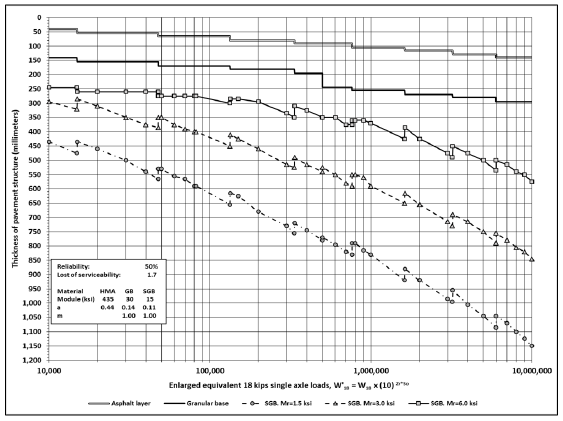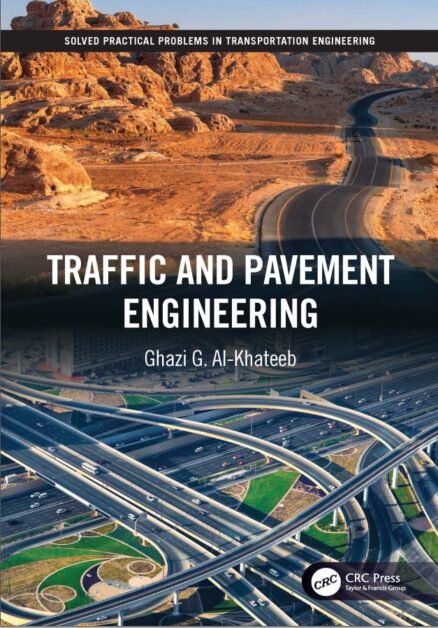
Introduction These lecture notes are dealing with the design of flexible pavements.

It is therefore greatly appreciated if you inform the authors about any typing errors you may find. Great care has been given to the preparation of these notes some errors however can never be avoided. Furthermore the collection of input needed to make a mechanistic empirical based design will be discussed extensively. Ample attention however will also be paid to how the stress dependent, non linear behaviour of unbound materials can be taken into account. It will be assumed that the materials are isotropic, homogeneous and linear elastic. In these lecture notes we will concentrate on the use of linear elastic multi layer theory for the calculation of stresses and strains in pavement structures. All this explains why the current design methods are classified as mechanistic empirical. This makes them dependent on the local conditions and type of pavement structure involved and empirical knowledge is needed to derive and use these shift factors successfully. These shift factors often are of significant magnitude and are commonly based on matching predicted behavior to observed behavior. This implies that shift factors need to be applied in order to be able to use the laboratory determined transfer functions for practical purposes. Because of this and because the significant differences in stress conditions as used in the laboratory and those that occur in practice, as well as the differences in damage initiation and progression between laboratory specimens and real pavements, the transfer functions as determined in the laboratory cannot be applied directly to calculate the number of load repetitions to failure for a specific pavement. In other words: the material characteristic derived from the test result is dependent on the geometry of the test as well as the way in which the test was performed. The reason for this is that although these transfer functions are usually based on extensive material testing in the laboratory, most of these tests give a specimen property rather then a material property. This part of the design method is the empirical part. a fatigue relation) that allows us to calculate how many times a particular tensile strain can occur before failure occurs. In any case the calculated stresses and strains are then used as input in a transfer function (e.g. This however is a serious simplification of reality because most pavement materials exhibit a stress dependent, elasto-visco-plastic behaviour. assume that pavement materials behave linear elastic, isotropic and homogeneous. In order to be able to make such analyses, assumptions need to be made on the behaviour of the material. What do we mean by mechanistic empirical methods? By mechanistic we mean that the design methods are based on the analysis of stresses and strains in the pavement structure due to traffic loads or environmental effects using multi layer theory.


Major defect types in flexible pavements Cracking Deformations Desintegration and wear Early design systems, the CBR method AASHTO design method Development of mechanistic empirical design methods Introduction Stresses in a homogeneous half space Stresses in two layer systems Stresses in three layer systems Stresses due to horizontal loads Stresses in multilayer systems, available computer programs Axle loads, wheel loads and contact pressures Axle loads Wheel loads Contact pressures Climatic data Introduction Temperature Moisture Asphalt mixtures Introduction Mixture stiffness Fatigue resistance Resistance to permanent deformation Granular materials Introduction Estimation of the resilient characteristics of sands and unbound materials Estimation of the failure characteristics of unbound materials Allowable stress and strain conditions in granular materials Base courses showing self cementation Cement and lime treated materials Introduction Lime treated soils Cement treated materials Subgrade soils Introduction Estimation of the subgrade modulus Allowable subgrade strain Special design considerations Introduction Edge effect Reflective cracking Design systems Introduction Shell pavement design software ASCON design system TRH4 155 References 163 2ģ Preface In these lecture notes the design of flexible pavements by means of mechanistic empirical methods is discussed.

Molenaar Delft, March 2007Ģ Table of contents Preface 3 1. 1 Lecture Notes CT 4860 Structural Pavement Design Design of Flexible Pavements Prof.dr.ir.


 0 kommentar(er)
0 kommentar(er)
